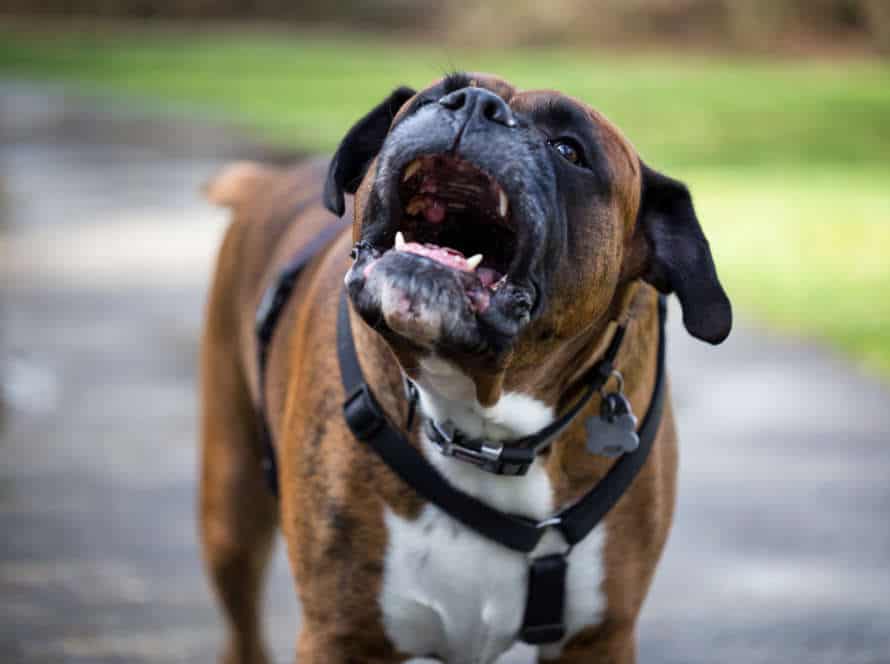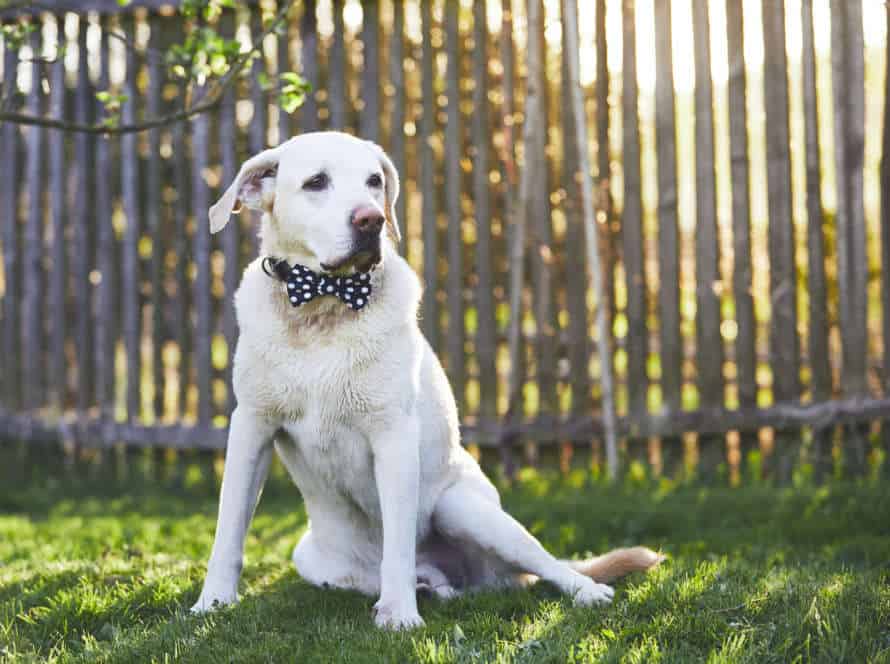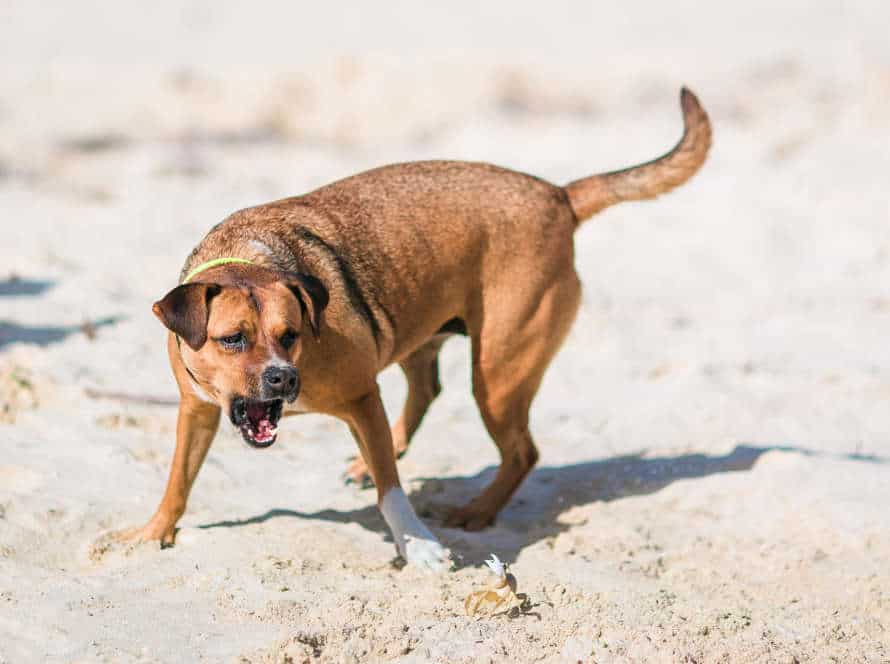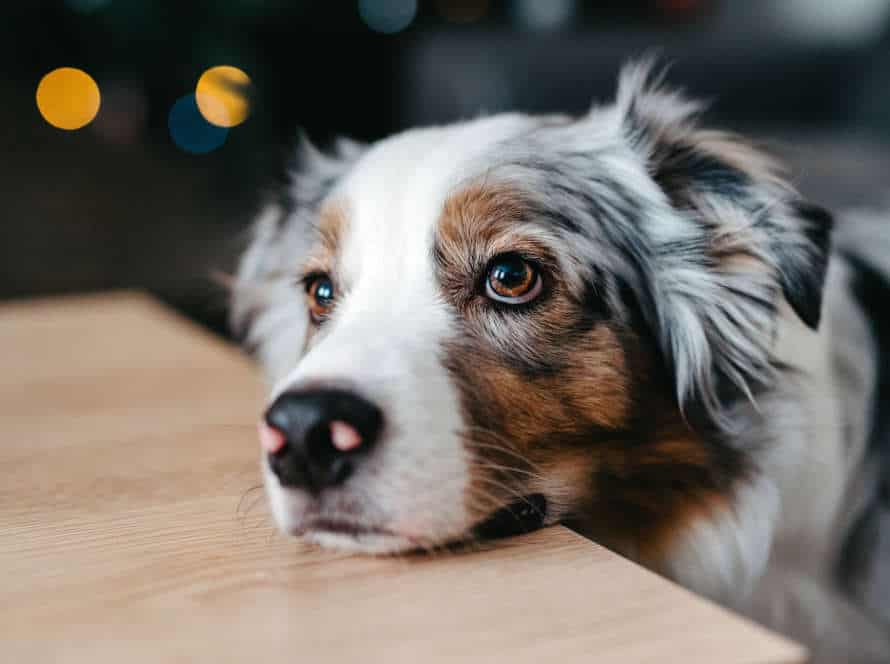Why do some dogs develop separation anxiety and others don’t
Separation anxiety in dogs can be caused by a range of things. No two pooches are alike. Some may have a genetic predisposition. Others may have gotten it due to environmental factors or a lack of socialization.
Genetics have an influence on a pup’s temperament, including its capacity to handle stress and anxiety. Certain breeds like Labrador Retrievers may be more prone to separation anxiety due to their strong connection with owners.
Environmental factors like lack of exercise, changes to routine or family dynamics, and a traumatic event may induce separation anxiety in dogs. Socializing them during puppyhood can help to avoid this.
It’s essential to remember that each dog is unique, and the causes of its separation anxiety may vary. Working with a vet or dog trainer can help design a treatment plan tailored to your furry friend.
Factors that Can Contribute to Separation Anxiety in Dogs
Separation anxiety is a common problem for some pooches. If it’s not attended to, it can be serious. Pet owners can better handle this issue if they know what causes it. These causes differ, and can range from genetics, environment, and behaviour. Let’s explore them in more detail.
Genetics and Breed Predisposition
Separation anxiety in dogs is complex. It can have many causes. These include genetics and breed. Some breeds may be more likely to suffer from it, e.g. Labrador Retrievers and German Shepherds. They often form strong attachments to their owners and can be anxious. Genetics can also make a dog more likely to experience anxiety. Other factors include early-life experiences, changes in routine, and lack of socialization.
Pro Tip: If your dog has separation anxiety, get help from a professional trainer or behaviorist. They will create a plan to deal with the causes of the anxiety.
Early Life Experience and Socialization
Separation anxiety in dogs can be caused by many things. It varies from pup to pup, and some never develop it.
Early life experiences can play a role. If a pup is taken away from their mum and littermates too soon, or experience trauma, they may be more likely to have separation anxiety.
Socialization is also important. If a pup isn’t socialized properly between 3-14 weeks of age, they may struggle with new environments.
Certain breeds are more prone to separation anxiety due to their history as companion animals.
Pre-existing medical conditions, like thyroid disorders or chronic pain, may lead to separation anxiety too.
Environmental changes, like a move or the addition or loss of a family member, can also trigger anxiety.
Identifying and addressing these factors can prevent and manage separation anxiety.
Traumatic Events
Traumatic events, such as abuse, neglect, or sudden change of environment, can be a factor of separation anxiety in dogs. Not all dogs show this, though. Here are the reasons why:
- Early Life Experiences: Separating puppies from their moms too soon, or having traumatic and neglectful life experiences, can make them more prone to separation anxiety.
- Breed Predisposition: Weimaraners and Labradors are more prone than other breeds, because of their attachment and social-naturedness.
- Attachment Style: Dogs that are overly attached to their owners, or too dependent on human interaction and affection, may be more likely to experience separation anxiety.
Traumatic events are not the only cause of separation anxiety. It varies between each dog.
Signs and Symptoms of Separation Anxiety in Dogs
Separation anxiety in dogs is something to be aware of. Owners should recognize the signs and symptoms. Common ones include:
- Barking
- Whining
- Pacing
- Chewing
- Going to the lavatory indoors
Let’s have a closer look at these.
Destructive Behavior
Chewing, scratching, and digging are often signs of Separation Anxiety in dogs. It is caused by extreme stress when left alone and leads to disruptive behavior. Symptoms include excessive barking, pacing, and escaping. Separation Anxiety has many causes, like genetics, early life experiences, lack of socialization, and inconsistent schedules. Some dogs are more prone due to their breed or age.
To address it, identify the root cause. Then, create a plan with tailored training and behavior modification. Desensitization and counter-conditioning, plus mental stimulation and gradual alone time, may help. Professional dog trainers or behaviorists can be useful too.
Pro tip: Don’t punish your dog for Separation Anxiety. Work with a professional to find a behavioral solution that fits their needs.
Excessive Vocalization and Whining
Excessive vocalization and whining? Common symptoms of doggy separation anxiety! What causes it? Many things. Separation anxiety is when a pup gets worried and distressed when away from their owner, or when left alone for long.
So, why do some pups suffer from this and others don’t?
- Early life experiences. If a pup is taken from their mum or siblings too soon, or had bad experiences during socialization, they are more likely to struggle.
- Breed. Certain breeds, like German Shepherds and Labradors, are more likely to get separation anxiety. This is because they have such high energy and a strong bond with their owners.
- Changes in routine. Dogs love routine. Any sudden changes could be the trigger.
- Lack of exercise. Dogs need to exercise to stay healthy. When they don’t, their anxiety levels go up.
If your pup shows signs of anxiety, like excessive vocalization, destructive behavior, or inappropriate elimination, get help from a professional. Tip: Start training and socializing your pup early to prevent any issues.
Inappropriate Elimination or Soiling
Inappropriate Elimination or Soiling is a common sign of separation anxiety in dogs. If a pup is feeling anxious, stressed, or panicked when left alone, they may engage in unwanted behaviors.
Destructive chewing and digging, howling, barking, or whining, trying to escape the house/crate, pacing or restlessness, and excessive panting or drooling are all signs of separation anxiety in dogs.
Reasons why dogs get this condition include lack of socialization, sudden changes in routine, past traumatic experiences, changes in living situations, or even genetics.
Prevention of Separation Anxiety in Dogs
Dogs suffer from Separation Anxiety – a hard-to-control issue. It happens when canines are left alone for too long and start to feel anxious. This brings on barking, scratching, destroying stuff and other bad habits.
To keep dogs content and healthy, preventing Separation Anxiety is key. But, why some dogs get it and others don’t is not always obvious. Let’s look at the factors that can cause Separation Anxiety in dogs and how to stop it.
Gradual Conditioning and Training from an Early Age
Conditioning and training from a young age can help prevent separation anxiety in dogs. It can cause destructive behavior and stress.
Here’s how:
- Start by leaving your pup alone for short periods. Then increase the duration as they get older. This builds independence and comfort with being alone.
- Give them mental stimulation toys like treat puzzles, chew toys or interactive games. Keep them occupied when you’re not around.
- Always reward good behavior and ignore bad behavior. This helps them develop habits that keep them calm and relaxed.
- Crate train your dog. Give them a safe place to go when anxious or stressed.
- Exercise is vital. Give them daily routines to keep body and mind active and healthy.
Ensuring Physical and Mental Stimulation During Your Absence
Dogs can experience separation anxiety if they don’t receive physical and mental stimulation when left by themselves. Here are some methods to make sure your pup gets the stimulation they need:
- Puzzle Toys! Give your pup toys that help keep them mentally active.
- Exercise! Before you go, take them for a walk, run, or play with them for at least 30 minutes.
- Interactive Toys! Balls, chew toys, and tug ropes can keep them engaged and relieve their anxiety.
- Treat Dispensing Toys! These require your pup to work for the reward and keep them busy while you’re away.
By providing mental and physical stimulation, you can help prevent separation anxiety in dogs when they’re alone.
Using Tools to Comfort Your Dog During Separation
Separation anxiety in dogs can be prevented in many ways. Here are some tools to consider:
- Anxiety vests – These snug-fitting vests provide gentle, constant pressure to calm anxious pets.
- Pheromone sprays – These mimic mother dogs’ calming pheromones. Spray them on bedding or in a calming space.
- Puzzle toys – Interactive toys keep your dog’s mind active and distract them from anxiety.
- Calming music – Play calming music or leave the TV on. It creates a calming atmosphere.
Not all dogs develop separation anxiety. Professional help can determine the best approach for your dog’s needs.
Treatment of Separation Anxiety in Dogs
Separation anxiety in dogs is a serious matter. Identify the signs in your pup right away and take action. Treatment of this issue is complex, but there are strategies to manage it. Some options available are:
- Establish a routine.
- Provide lots of exercise.
- Provide enrichment activities.
- Desensitization and counter-conditioning.
- Medication.
Counterconditioning and Desensitization
Counterconditioning and desensitization can help treat separation anxiety in dogs.
Separation anxiety is when a dog gets distressed when apart from their owner.
Counterconditioning is about changing the dog’s feelings when apart. This can be done by rewarding the pup with a toy or treat when the owner leaves.
Desensitization is about exposing the canine to situations that make them anxious. Start mild, then increase the intensity. This can help the pup get used to being alone and lessen the fear they feel.
Certain dogs are more likely to have separation anxiety, but environment and behaviour can also be involved. Exercising, socializing and giving mental activities to your dog can help stop separation anxiety from developing.
Medications and Supplements for Separation Anxiety
Separation anxiety is a problem among dogs. It can be treated with medications and supplements. Medication alone may not be enough. Behavior modification techniques are necessary too.
Here are a few medications and supplements that can help:
- Alprazolam – an anti-anxiety medication to calm nerves and reduce fear.
- Fluoxetine – a SSRI to regulate mood and anxiety levels.
- CBD oil – known to have a calming effect and reduce anxiety symptoms.
- Adaptil – a synthetic pheromone mimicking a mother dog’s calming scent.
Must consult with a vet before administering any of these.
Fun Fact: Separation anxiety can affect all dogs, but genetics and early life experiences play a role too.
Professional Dog Training and Behavioral Modification
Separation anxiety is a common problem in dogs. It can lead to destructive and disruptive behavior. Dogs become too reliant on their owners and get anxious when apart. Not all dogs show this behavior, but some are more prone than others.
Professional dog training and behavioral modification can be an effective way to treat it. A trainer will work with you and your dog to address the causes of the anxiety. They’ll teach new coping mechanisms, such as crate training, desensitization, teaching new habits, and gradual separation training. This will help your pup become more independent and better cope when you’re not around.
Pro tip: Be patient, consistent, and understanding when training. Dogs are social and need time to learn.
Conclusion and Final Thoughts
To sum up, dogs can become anxious due to various causes. Certain breeds are more prone to anxiety due to genetics. Whereas, others may suffer anxiety because of a past traumatic event or inadequate training and socialization.
Remember, each dog is different. What works for one may not work for another. If you think your dog is anxious, get advice from a vet or animal behavior specialist.
Finally, be persistent and consistent with your dog’s training and behavior modification. With dedication and patience, you can help your furry friend overcome their anxiousness and live a content and healthy life.
Frequently Asked Questions
1. What causes separation anxiety in dogs?
Separation anxiety in dogs can be caused by a variety of factors, including a lack of training, changes in routine, anxiety, fear, or previous abandonment.
2. Can all dogs develop separation anxiety?
No, not all dogs will develop separation anxiety. Some dogs are naturally more adaptable to changes in their routine and environment, and others may have a more anxious temperament that makes them more prone to developing separation anxiety.
3. Can separation anxiety be prevented?
While there is no sure way to prevent separation anxiety, there are steps you can take to help reduce the chances of it developing. This includes training your dog to be comfortable being alone, gradually increasing the time they spend alone, and creating a comfortable and safe space for them.
4. How is separation anxiety treated?
Treatment for separation anxiety can involve a combination of behavioral training, medication, and environmental modifications. This may include teaching your dog to be calm and relaxed when you leave, providing mental stimulation while you’re away, and using calming tools like pheromone diffusers or prescribed medication.
5. Can dogs grow out of separation anxiety?
Some dogs may grow out of separation anxiety as they mature and become more confident and independent. However, others may require ongoing training and management to keep their anxiety under control.
6. Is separation anxiety a sign of a poorly behaved or disobedient dog?
No, separation anxiety is not a sign of a poorly behaved or disobedient dog. It is a complex behavioral issue that requires patience, understanding, and appropriate training to overcome.







